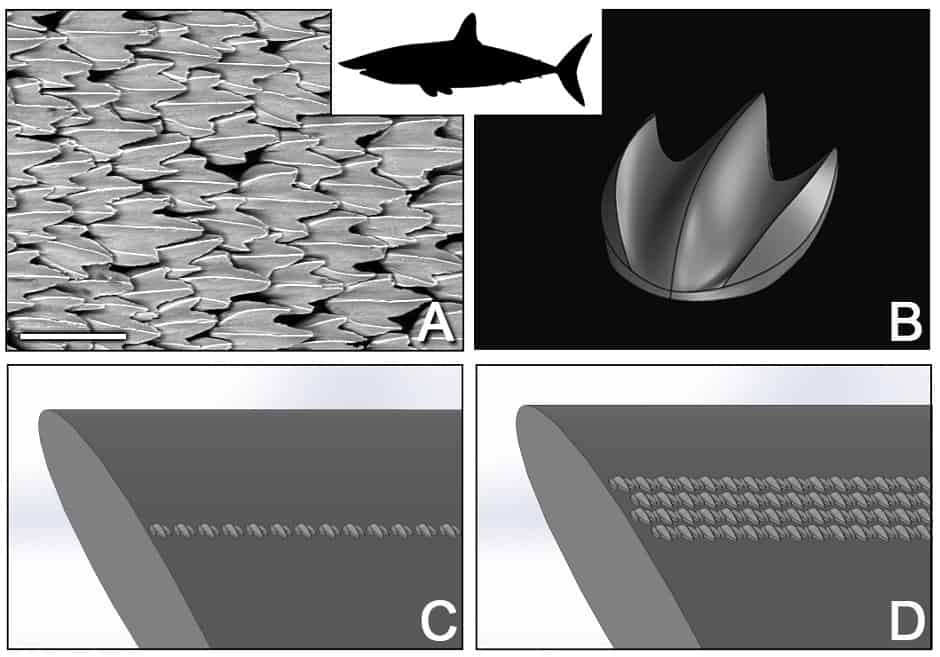
Evolutionary biologists and engineers at Harvard University have found that the composition of shark skin could help improve the aerodynamic performance of aerofoils. The research, carried out with colleagues at the University of South Carolina, is published in the Journal of the Royal Society Interface.
"The skin of sharks is covered by thousands and thousands of small scales, or denticles, which vary in shape and size around the body," said George Lauder, the Henry Bryant Bigelow Professor of Ichthyology and Professor of Biology in Harvard’s Department of Organismic and Evolutionary Biology, and co-author of the research. "We know a lot about the structure of these denticles - which are very similar to human teeth - but the function has been debated."
To date, most research has focused on the drag reducing properties of denticles but the latest work has considered whether they are better suited for increasing lift.
To help test that hypothesis, the researchers collaborated with engineers from the Harvard John A. Paulson School of Engineering and Applied Sciences (SEAS) to recreate the denticles of the shortfin mako, which is the world’s fastest shark.
Using micro-CT scanning, the team imaged and modelled the denticles in three dimensions, then 3D printed the shapes on the suction side of an aerofoil.
"Aerofoils are a primary component of all aerial devices," said August Domel, a PhD student at Harvard and co-first author of the paper. "We wanted to test these structures on aerofoils as a way of measuring their effect on lift and drag for applications in the design of various aerial devices such as drones, airplanes, and wind turbines."
The researchers tested 20 different configurations of denticle sizes, rows and row positions on aerofoils inside a water flow tank. They found that in addition to reducing drag, the denticle-shaped structures increased lift, acting as high-powered, low-profile vortex generators that alter the airflow over the surface of a moving object to make it more aerodynamic.
"These shark-inspired vortex generators achieve lift-to-drag ratio improvements of up to 323 per cent compared to an aerofoil without vortex generators," said Domel.
According to the team’s paper, this is enabled by two simultaneous mechanisms: a separation bubble in the denticle's wake altering the flow pressure distribution of the aerofoil to enhance suction; and streamwise vortices that replenish momentum loss in the boundary layer due to skin friction.
"You can imagine these vortex generators being used on wind turbines or drones to increase the efficiency of the blades," said Katia Bertoldi, William and Ami Kuan Danoff Professor of Applied Mechanics at SEAS and co-author of the study. "The results open new avenues for improved, bioinspired aerodynamic designs."

Caption: Environmental scanning electron microscope image of denticles from the shortfin mako shark (a) and (its corresponding parametric 3D model (b). These denticles were arranged in a wide range of different configurations on an aerofoil, two examples of which are shown here (c,d ). (Image courtesy of Harvard University)

Red Bull makes hydrogen fuel cell play with AVL
Formula 1 is an anachronistic anomaly where its only cutting edge is in engine development. The rules prohibit any real innovation and there would be...